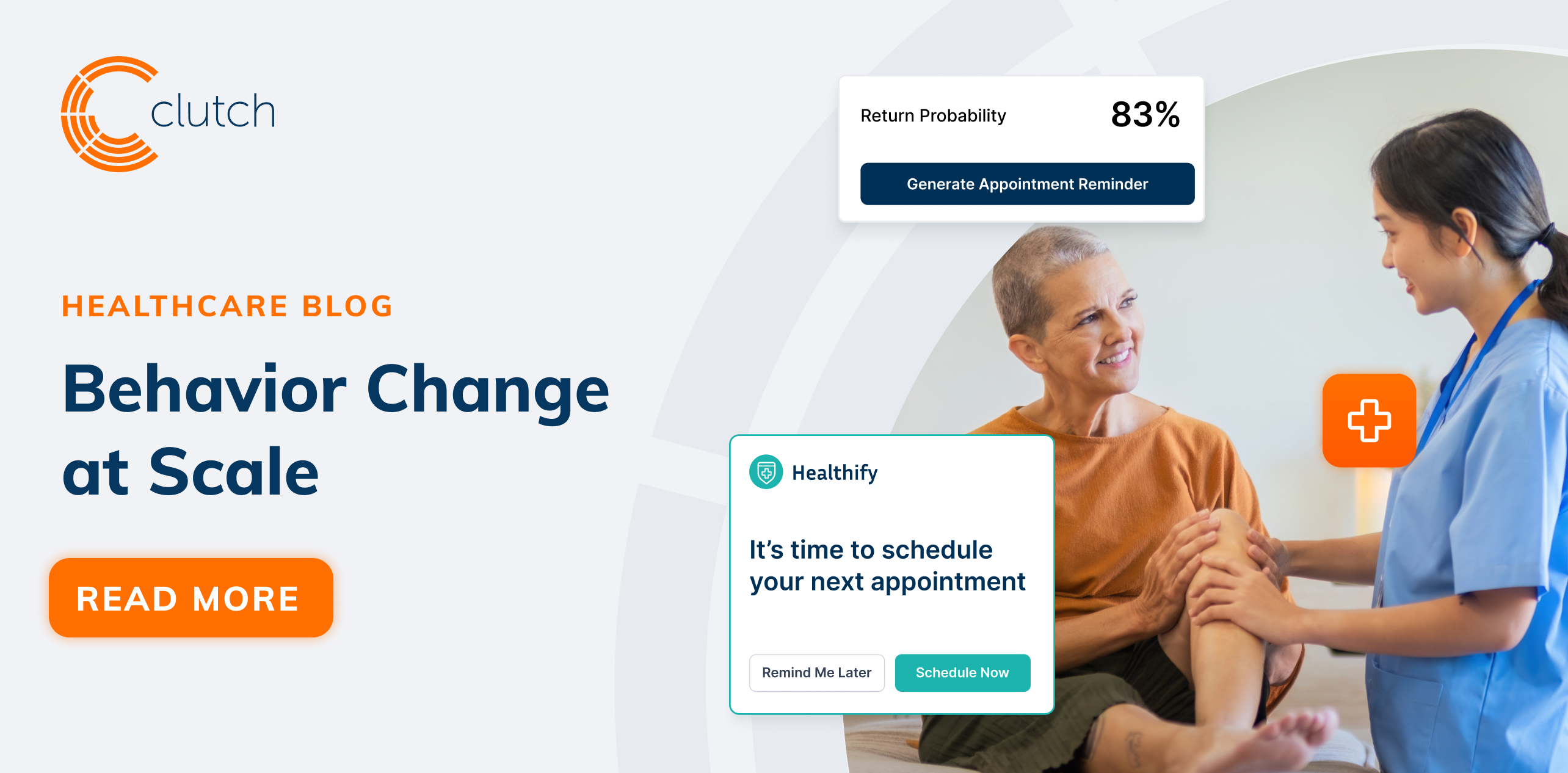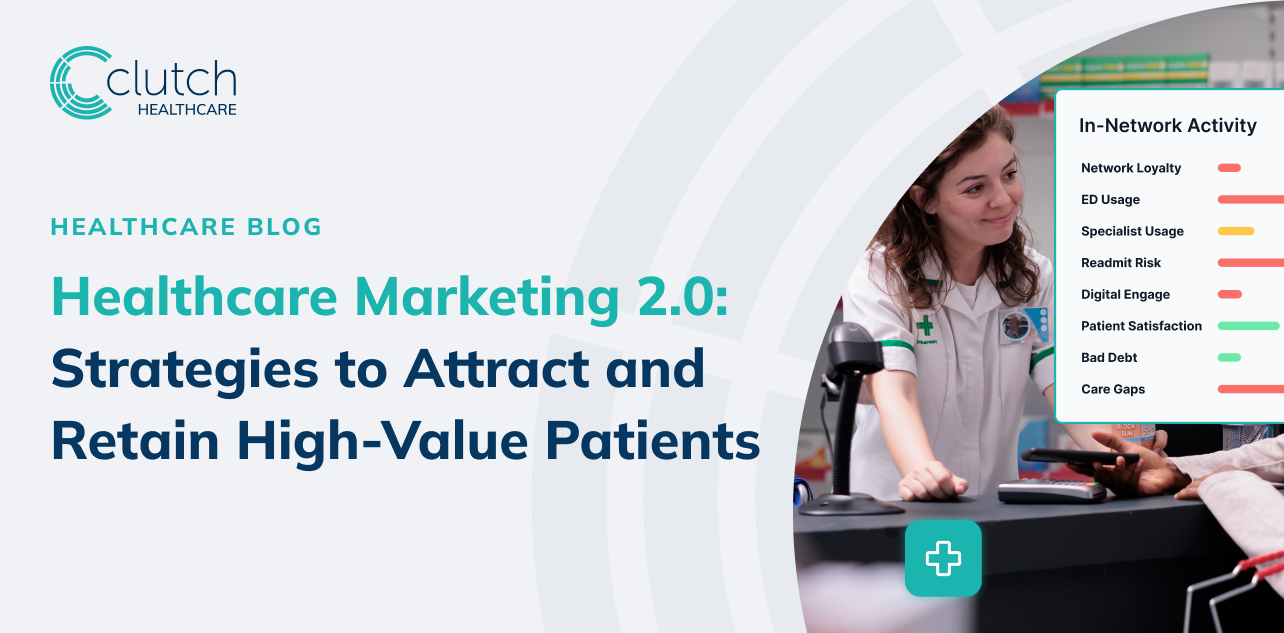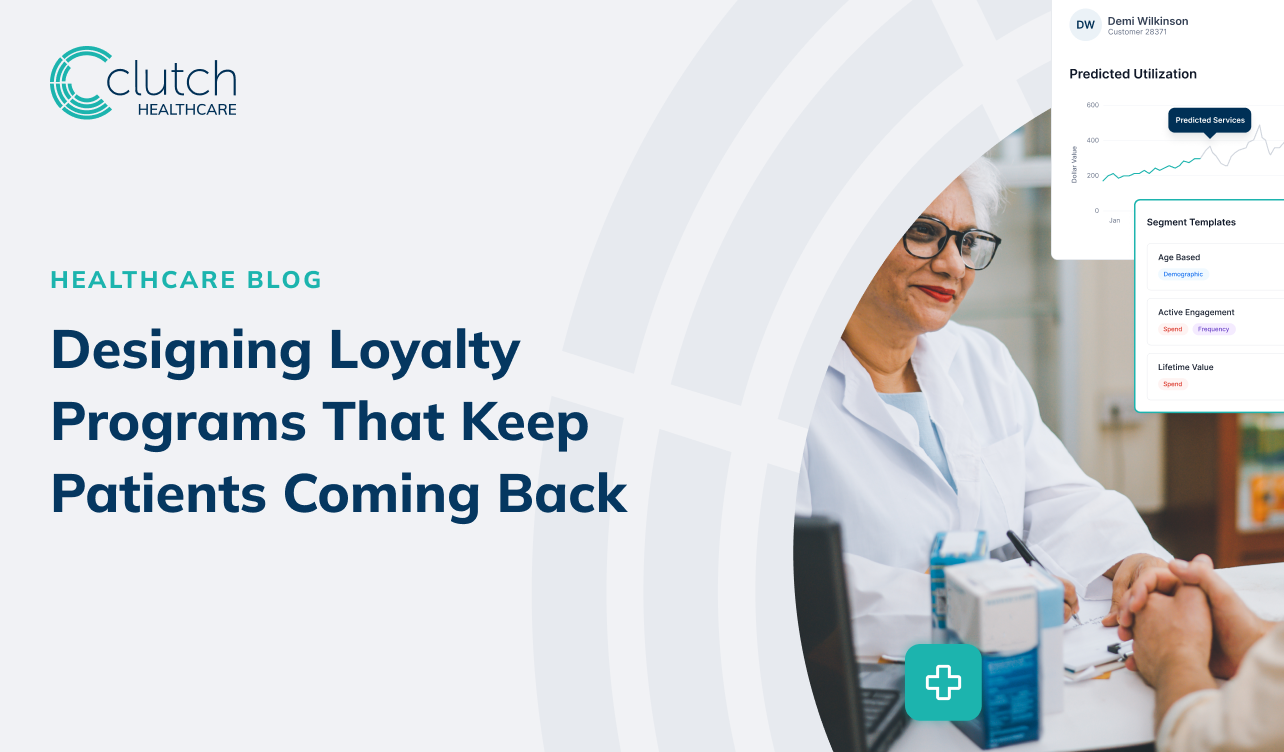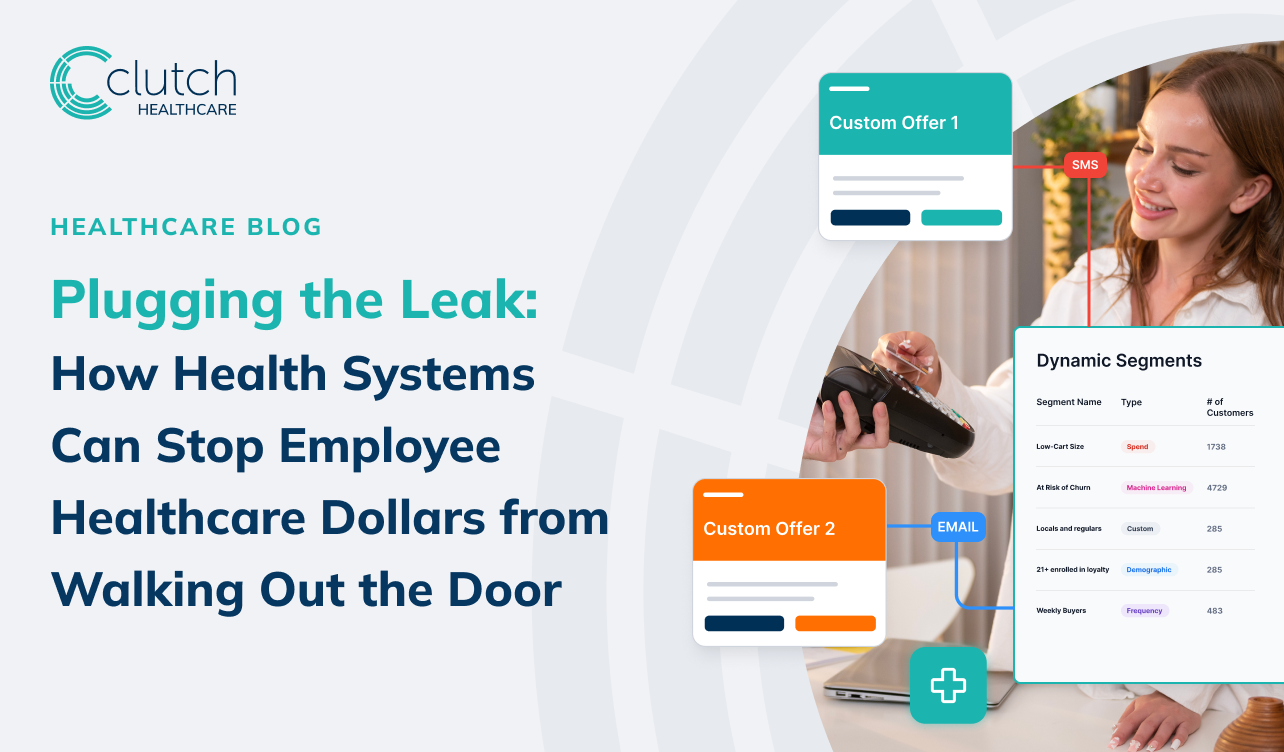Behavior Change at Scale: A Hybrid Approach Using TTM, COM-B, and Nudge Theory on the Clutch Platform

Introduction: A New Era of Patient Engagement
As healthcare organizations face increasing pressure to improve outcomes, reduce costs, and enhance the patient experience, one thing has become clear: effective engagement isn’t optional—it’s essential. Whether it's preventive care, chronic disease management, or post-discharge follow-up, long-term success depends on changing patient behavior at scale.
Yet traditional outreach strategies fall short. One-size-fits-all messaging, static content, and linear pathways don't reflect the real complexity of human behavior. To drive meaningful change, healthcare systems must evolve—and that starts with understanding the "why" behind patient actions.
A Hybrid Framework for Behavior Change
The Clutch Platform brings together advanced AI/ML, omnichannel communication, and loyalty mechanics to enable personalized, data-driven engagement. At the heart of our approach is a hybrid behavioral model that integrates three of the most effective behavior change frameworks:
- The Transtheoretical Model (TTM): Identifies where a patient is on their journey to change.
- COM-B (Capability, Opportunity, Motivation): Explains the underlying reasons for behavior.
- Nudge Theory: Guides patients toward action through subtle, non-coercive interventions.
This framework powers dynamic patient segmentation, precise barrier identification, and personalized interventions—all delivered through the Clutch Platform.
Mapping the Model: Segments in Action
By combining TTM stages with COM-B insights, we define eight core segments that reflect real-world patient mindsets and readiness. Each segment includes specific behavioral traits and recommended interventions:
- Unaware / Unmotivated: Precontemplation; low knowledge or motivation. Nudge with simple, engaging education.
- Aware but Hesitant: Contemplation; partial motivation. Nudge with small incentives and social proof.
- Motivated but Lacking Opportunity: Preparation; logistical barriers. Nudge with telehealth, transport, extended hours.
- Taking Action / Building Skills: Action; needs reinforcement. Nudge with real-time guidance and micro-rewards.
- Sustaining New Habit: Maintenance; risk of relapse. Nudge with progress tracking and benefit reminders.
- At Risk of Relapse: Regression; behavior decline. Nudge with targeted re-engagement and urgency.
- Highly Skilled, Low Motivation: Varies; disengaged despite capability. Nudge with personalized ROI messaging.
- Optimal Advocates: Maintenance; ideal performers. Nudge with recognition and ambassador programs.
Implementing the Model on Clutch
The Clutch Platform allows healthcare systems to automate and scale this framework:
- Data-Driven Segmentation: EMRs, engagement history, and behavioral data feed our AI to determine TTM stages and COM-B gaps.
- Dynamic Nudges: Interventions are mapped and triggered automatically based on behavioral insights.
- Omnichannel Execution: Nudges are delivered across SMS, email, push notifications, and web—using Send Time Optimization for maximum impact.
- Loyalty Integration: Clutch’s reward engine enables seamless use of incentives, health credits, and perks.
Real-World Use Cases
- Chronic Disease Management: Patients with diabetes can receive targeted nudges based on their readiness stage—from telehealth logistics for the "Motivated but Lacking Opportunity" to step-by-step education for "Taking Action."
- Preventive Screenings: Unengaged patients are nudged with simple content and auto-scheduled screenings. As they progress, social proof and incentives help them commit.
- Post-Discharge Follow-Up: Patients are monitored for medication adherence. A missed refill triggers a re-engagement campaign tailored to the identified COM-B gap.
Nudge Theory in Practice
Clutch incorporates proven behavioral economics tactics:
- Friction Reduction: One-click scheduling, pre-filled forms.
- Social Proof: "Most patients in your area have completed this."
- Loss Aversion: "Don't lose your health credit—book now."
- Reciprocity: Offer small wellness kits or bonus points upfront.
Results That Matter
Organizations using this hybrid model through Clutch have seen:
- Increased appointment bookings and screening adherence.
- Improved chronic condition management and medication compliance.
- Reduced patient churn and higher satisfaction.
- Greater efficiency through automated, precise outreach.
How to Get Started
- Connect Data: Securely integrate EMR, engagement, and scheduling data.
- Define Segments: Adopt or tailor the hybrid segmentation framework.
- Pilot a Program: Start with one population (e.g., hypertension), test, and iterate.
- Scale & Optimize: Use Clutch analytics and A/B testing to refine messaging, nudges, and timing.
Conclusion: Reimagining Engagement, Driving Outcomes
Behavior change in healthcare doesn’t happen through generic outreach or rigid workflows. It happens when we understand patients—where they are, what they need, and what will help them take the next step.
By integrating TTM, COM-B, and Nudge Theory into one intelligent, scalable framework, the Clutch Platform empowers healthcare organizations to meet patients with empathy, data, and precision. The result? Better engagement, healthier populations, and a smarter, more human approach to care.



